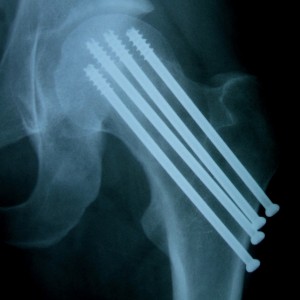Shanghai researchers develop bone-repairing bioglass
The Shanghai researchers have combined mesoporous bioglass with a compound called C3S, one of the materials used in Portland cement. The resulting material is then used as a 3-D printing media to generate “scaffolds” that the body can use as a building block for new bone repairs. The bioglass eventually degrades, but not before it spurs the growth of new bone.
By itself, C3S doesn’t mesh very well with the growth rate of new bone in the body, which explains why it’s not very helpful in repairing major fractures. It also doesn’t work well with 3-D printing, because it sets very fast. To prevent curing, which limits its usefulness in bone repairs, the scientists added a binding agent to the C3S, and the mesoporous bioglass mixture. Following 3-D printing, the resulting “scaffolds” were cured in a water bath.
The hybrid scaffolds, which in some cases were mixed with stem cells, were better at supporting bone growth and created a variety of different cells within the new growth. The material has not yet been tried in human or living animal subjects, but has only been used in the lab. The results so far have been promising, but more work will need to be done before it can be tested on humans.
Glassprimer™ glass paint is a specialized glass coating that bonds permanently to glass surfaces. GlassPrimer also makes a glass surface molecular activator that is designed to work with UV-inkjet glass printing processes. For more information about Glassprimer™ glass paint, please visit the rest of our site. If you’d like to purchase Glassprimer™ glass paint, please visit our online store
Photo Credit: John Lillis, via Flickr.com


